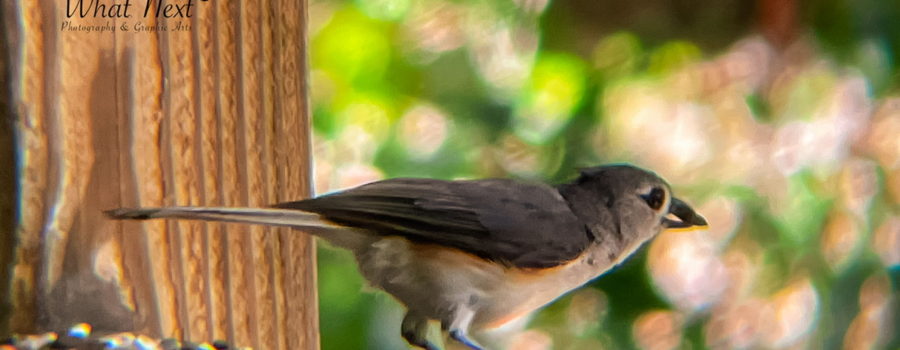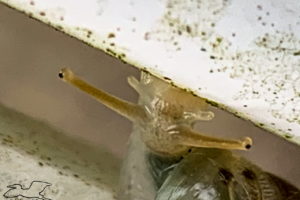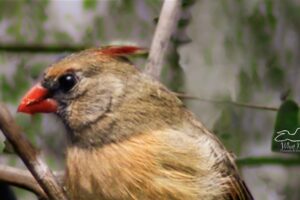The Beautiful Tufted Titmouse has a Dynamic Personality

One of the most common visitors to my feeding station on a year round basis is the tufted titmouse. It is a small silvery grey bird with a white or lighter grey underside. There is often a touch of rust or peach along the flanks as well. These adorable little birds are closely related to the Carolina chickadees and black-capped chickadees and are frequently seen with them. Like the chickadees, they are omnivores eating a mixed diet of seeds and insects, especially caterpillars. Besides caterpillars, they will also eat bees, wasps, flies, beetles, and even occasionally snails.

Like the chickadees, tufted titmice are very acrobatic feeders. They will sometimes hang upside down from branches and twigs to pull insects out of the bark of trees. They are also known to pick seeds and berries on the fly. One of the reasons that I enjoy having these little birds around is that they are real characters. They generally get along well with the other birds, but I have seen them stand up to both the squirrels and the cardinals, who tend to be the feeder bullies. They have also been known to fly down and grab a tuft of hair right off of one of the dogs during nest building time! When the dogs are shedding heavily in the spring and I brush them out I always put the loose hair out for the birds. The titmice and the chickadees are always the first to come down and help themselves.

The tufted titmouse is one species that seems to be expanding its range. Right now it is found from New York south through most of Florida and west into Texas and Oklahoma. This range has expanded over the last few years and continues to expand both westward and northward. It’s believed that this may partially be due to global warming and may also be partially due to more and more people putting out feeders. In it’s range, these little guys can be found just about anywhere that there are tall trees. They’re found in deciduous woods, orchards, parks, and even suburban yards if tall trees are present. They use holes in these trees to make their nests. The holes can be natural holes or old woodpecker holes, but they must be large enough because unlike the chickadees, they won’t do any excavation on their own. They line the holes with moss, tree bark, and eventually hair or feathers before laying their eggs.

These little clowns, along with their cousins the Carolina chickadees are probably my favorite visitors to the feeding station. I just love their outgoing personalities and goofy antics. I also really like the fact that they stay around all year round and are willing to share the feeder with others. Most mornings they are literally waiting for me to get out there and put out the groceries. If I’m a little late they are in my trees calling out with their “peter-peter-peter” call. I guess they’re like my cats, telling the stupid person that they’ve forgotten to put down the food!






Recent Comments